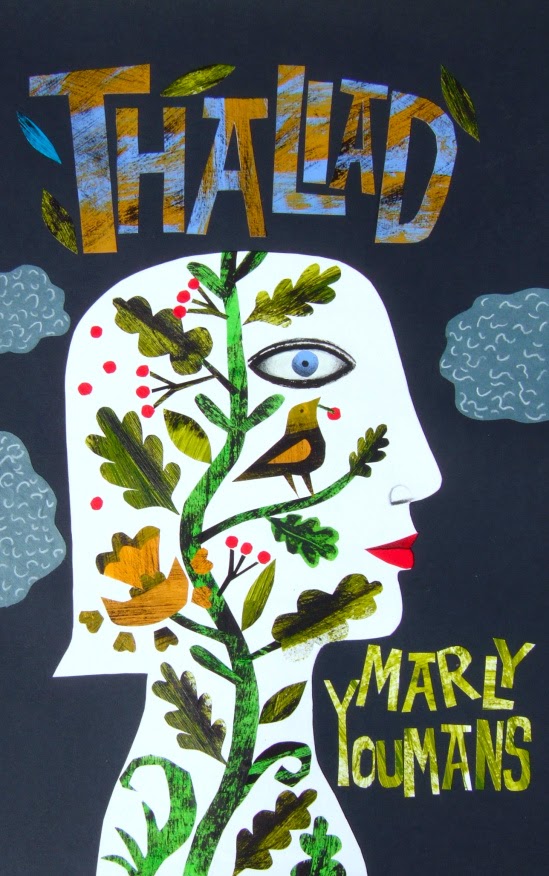 |
| Cover art by Lavina Blossom Hemet, California: Kelsay Books, 2014 |
Buffalo LaughterRichard Nester's collection of poems, Buffalo Laughter (Kelsay Books, 2014), will soon be featured at Lady Word of Mouth. In the meantime, here are some ruminations about the title from Richard, with a splash of advice to young poets.
Every year the buffalo get
together like a bunch of old actors.
There are only enough of them
left to make a movie.
The head buffalo plans something,
but the old times and the new times
are one time now, and it never quite happens.
There's a buffet--grass mostly and some water.
For a couple of hours the buffalo laughter
is plentiful, stampeding around the room
and then settling like snow.
It isn't as sad as you might think.
Later, there's a bill for the busted chairs.
As far as my collection goes, why the title? Several years ago I came across a kind of workshop precept advanced by Allen Ginsberg that one should never pair an adjective with a noun that embodies a quality already present in the noun. It so happens that Robert Bly violates the precept in a poem I am fond of reciting (partly because it’s short) when he says about striving
How strange to think of giving up all ambition!
Suddenly I see with such clear eyes
The white flake of snow
That has just fallen in the horse's mane!
Isn’t snow by its nature white? Perhaps not any more. In any case, I enjoy both Bly’s violation of the precept and the precept itself because Ginsberg’s advice provides a spur to creativity of the sort particular to poetry, and is likely to give birth to my favorite trope—the oxymoron. There don’t seem to be all that many oxymorons in English poetry (assuming the Norton Anthology provides us with a representative sample) prior to Robert Herrick, but following his announcement that a “wild civility” is to be preferred in art as well as female fashion, the oxymorons start to bloom like wild flowers.
So all I was originally trying to do with “buffalo laughter” was to please myself by making an oxymoron. I had been watching a television documentary the night before that described the state of the American continent before the arrival of Europeans. Of course, buffalo were plentiful then. However, the show made the somewhat ironic point that this plentitude wasn’t really a “natural” condition, but was rather the result of a complex symbiosis existing between the plains Indians and buffalo wherein Native Americans by engaging in slash and burn agriculture had created more space for buffalo to prosper. So even in those relatively pristine days, ecologically speaking, humankind was still impacting its environment in unpredictable ways.
In reviewing the poem following its appearance in Floyd County Moonshine—a very good magazine currently being published in the small town I grew up in—the local newspaper in its review of that issue described it as “whimsical.” Okay, but I had ambitions for it beyond mere whimsy. I considered it as embedding a kind of ecological comment in its structure. As the poem anthropomorphizes the buffalo, it simultaneously “bisonizes” humanity. The buffalo may well be laughing sardonically when the “bill” for the chairs “busted” by humanity comes due. Nevertheless, it’s still not as “sad as you might think.” After all, the universe will hardly be stopping to weep when the bill is at last presented.
Was I thinking about all this when I wrote the poem. Yes, absolutely. And also, just as absolutely—no! If I may pause to offer some advice to beginning poets, just give yourself a chance, by whatever means necessary, to get lucky, and give yourself the maximum opportunity to learn those means by reading and reading and reading. I can’t tell you exactly what those means are because some of them may not have been invented yet. After all, who told Dickinson that it might be a good idea to use dashes as a primary means of punctuation, and what’s to keep your adoption of the same style from being mere affectation. Nothing. Poetry makes no promises.
How the collection came to be called “Buffalo Laughter” is just that the title poem didn’t seem to fit with most of the other poems precisely because it was so “whimsical.” But I loved it, and so I created a rationale for its inclusion by calling the whole volume that and by positioning it close to other “nature” poems, like “Dune Grass,” whose anthropomorphizing is less obvious. Perhaps, between the two of them, one gets another resonance, which is that the subject of the book as a whole is about humanity’s place in the scheme of things that we create in the stories that we tell about ourselves—all kinds of stories, even Bible stories, which were among the first stories that I heard in my life. Way before Doctor Seuss or the Illiad, which by the way is alluded to in the poem “Between You and Me.”




























